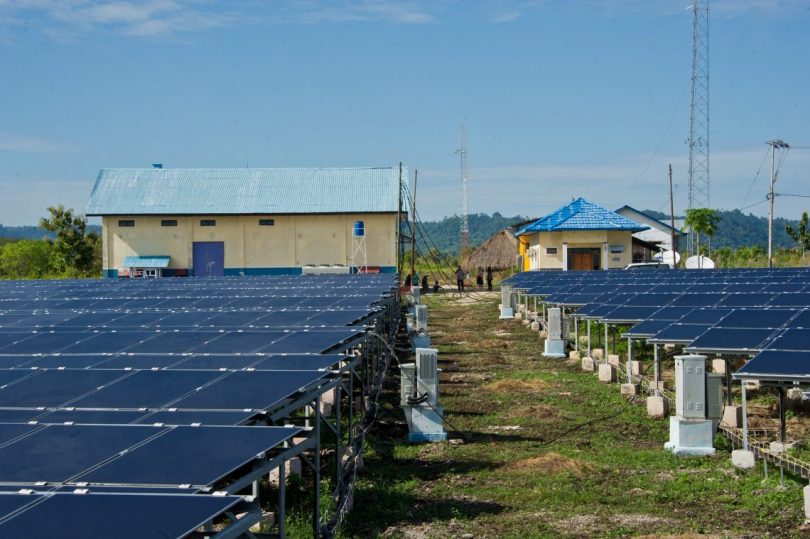According to the International Energy Agency, Indonesia has the potential to develop 75,000 megawatts (MW) of hydropower, 32,000 MW of biomass, 28,000 MW of geothermal and 4.8 kilowatt-hours (kWh) per day of solar power. Despite being endowed with a wealth of potential renewable energy sources, the country has struggled to accelerate growth in the sector.
In 2012, the total installed capacity of grid-connected solar, wind, and biomass energy was 31 MW. By 2017, it had grown to only 68 MW.
The neighbouring Philippines, by contrast, has seen rapid growth in its renewable energy sector over the same time period, with installed capacity of solar, wind, and biomass energy increasing from 153 MW to 1,537 MW.
Both countries used feed-in tariffs – a policy tool whereby the buyer agrees to purchase renewable energy for a period of 20 to 30 years, typically at above market rates – to promote investment in the sector. But only in the Philippines did this lead to accelerated growth.
The gap between the two countries can be explained by several factors. The Philippines has a friendlier regulatory environment for private capital, whereas foreign firms seeking to develop renewable energy projects in Indonesia often struggle in navigating a cumbersome bureaucracy.
The policy-making process has also been much more consistent in the Philippines, where the framework for feed-in tariffs was developed and tendered in a methodical and consistent way.
In Indonesia, feed-in tariffs have changed often and suddenly, and a wave of overlapping and confusing regulations have been instituted in an ad-hoc manner. This inconsistent policy-making has pushed down investor confidence.
There are also deeper structural forces at work. For one, Indonesia has large domestic coal reserves and a powerful extractive industry lobby, whereas the Philippines relies on imported coal. Indonesia therefore has access to ample cheap coal, the price of which can be kept artificially low for domestic power plants if need be.
The Philippines is at the mercy of global commodity prices. Developing a more diversified energy mix with a larger role for renewables, therefore, has more economic and strategic urgency in Manila.
The influence of the extractive industries lobby is also very significant in Indonesia, and deeply intertwined with the apparatus of the state. If renewable energy were to pose a serious challenge to coal in the country’s energy mix, it would risk the dominance of some very well-connected and powerful companies.
Under the surface, I believe this has worked to stall the growth of solar, wind, and biomass energy.
All of these factors have conspired to slow the growth of renewable energy in Indonesia, while the Philippines has seen its sector grow rapidly by applying the same policy tools but in a more effective manner. This begs the question of whether the country, a major source of global carbon emissions, will ever get serious about renewable energy.
There are some encouraging signs. In 2017, Indonesia’s Ministry of Energy issued Regulation 50/2017 which benchmarks how much the state-owned utility company Perusahaan Listrik Negara (PLN) can pay to purchase renewable energy to national and regional costs of production.
What this means is that PLN will no longer pay more to buy renewable energy than it costs for the utility to generate power from plants that it owns and operates.
In places like Java and Sumatra, which have large grids served mainly by cheap coal-fired plants, solar and wind will struggle to be financially competitive.
However, this regulation actually opens the door for more investment in renewable energy in places where it will have the most impact – in more remote parts of Eastern Indonesia like Kalimantan, Sulawesi, and the Maluku Islands.
Many of these areas have only moderate demand for electricity and are often served by expensive diesel generators.
A few hundred MW of wind or solar-generated capacity could have a significant impact, and because PLN’s costs of production are high, the new law allows them to pay up to 20 cents per kWh to purchase renewable energy in those parts of the archipelago. At those prices, renewable projects could be an attractive option for investors.
Indeed, in 2018 alone, two utility-scale wind farms totalling almost 150 MW went into operation in South Sulawesi. The Asian Development Bank is also expected to lend up to $3 billion to develop renewable projects in Eastern Indonesia between now and 2021.
While Indonesia’s recent experience with renewable energy has been disappointing, this new regulatory framework may create an opportunity for moderate but realistic capacity gains in the places that need it most.
Given the regulatory and political obstacles arrayed against renewable energy, this strikes me as a sensible and practical plan for the short- to middle-term.
This blog is based on the author’s article published in the Asia & the Pacific Policy Studies (APPS) journal. You can read the full paper, ‘Feed-in tariffs and the politics of renewable energy in Indonesia and the Philippines’, here.
This article is published in partnership with Policy Forum.



Leave a Comment